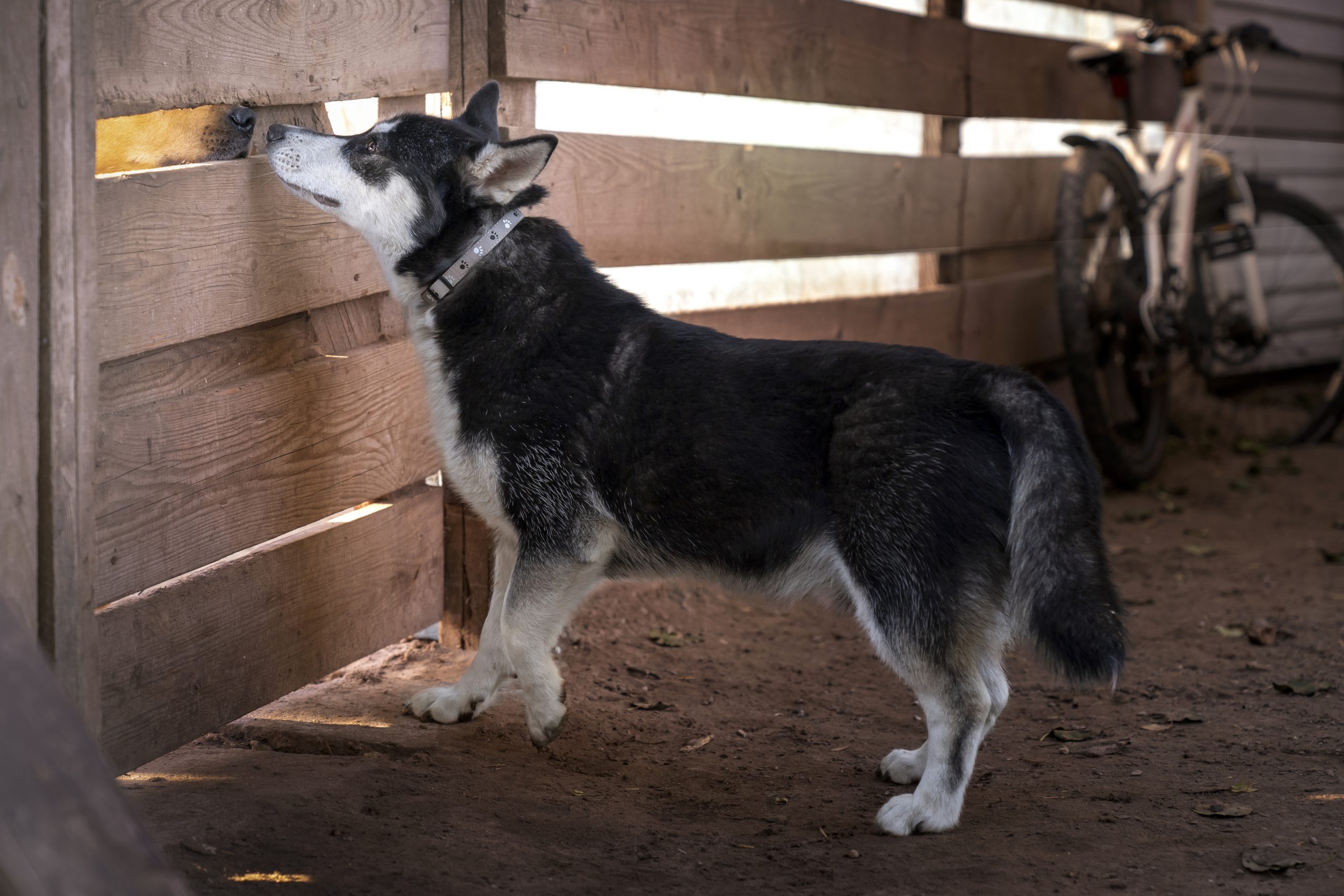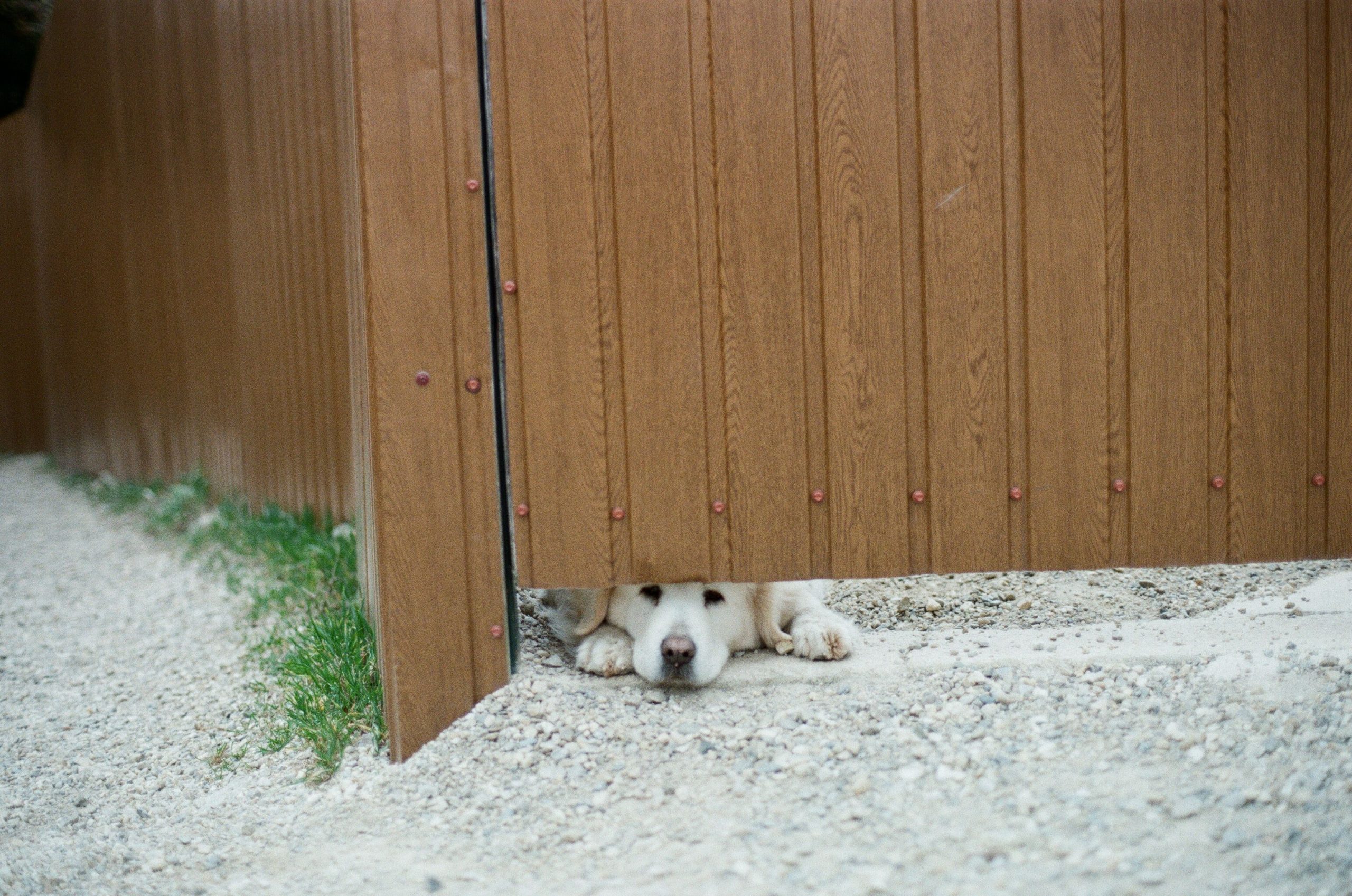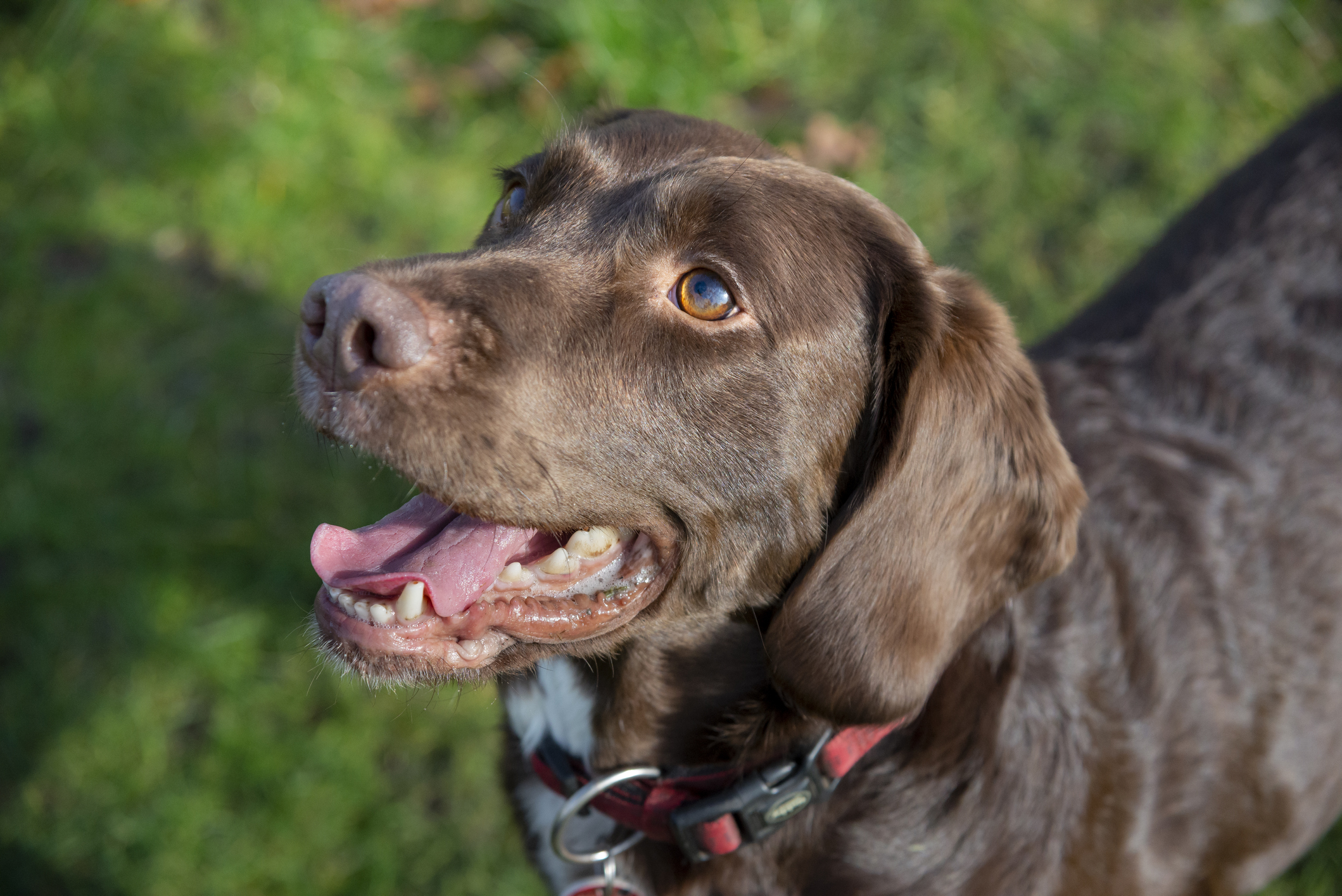How to stop a dog barking at the fence, by leading trainer Ben Randall
A dog barking through the fence can be scary for those who live around your house — Ben Randall gives advice on how to stop it from happening.


A dog that barks its head off when visitors or delivery drivers come to the door is never going to make you popular with your neighbours, but what if the problem is magnified by your pooch causing a ruckus every time someone walks along your fence line?
This is exactly the scenario being faced by RP, who has written to us from the US via our paws-for-thought@futurenet.com email address to ask for Ben’s advice on how to deal with his rescue dog’s reactivity and barking at the fence of his backyard.
Hey Ben,So, I have a four-year-old rescue dog. Just so happens he’s a Siberian husky x Belgian malinois. He’s a great dog, his only problem is his barking. The other day, I had some lady hitting my fence at him because she said he “scared her” and I am worried that he’s going to get hurt if I can’t get this issue under control. He barks at our back fence, as there’s a lane going past it. But, to be honest, everyone’s dog on our block barks at everyone passing by. How do I break this cycle when the neighbours' dogs bark, but people don’t mind as much because they are little dogs and my boy is big? I was thinking of setting up some sort of barrier to create a buffer so he can’t get right up close to the fence. If I see someone coming, I hold him back. He stays with me, but, the second I let him go, he storms the fence and tries to ‘bark off’ anyone that comes by. In contrast, we are winning the battle on walks, as he’s been getting really good at not reacting. In the past 2-3 months, his walking has been amazing, unless another dog comes running up to him off-leash, while he’s on the leash etc. Then, once he gets worked-up, he doesn’t have a good walk anymore. However, I am not so concerned about that, as we are getting there with the walking. It’s his barking in the back yard that I want to fix. Also, it feels impossible to train him to react positively to the fence when people are literally kicking, slapping and throwing things at him. I don’t think he’s had one positive interaction at the fence. Please can you help?
As you own a big, cross-breed dog that’s strong, powerful and athletic, he will look (and sound) intimidating to passers-by and your neighbours. So, although how some of them have been reacting to him barking at the fence is not right or helpful, it is important to improve his training, both to ensure his safety and that of anyone passing or visiting your home. However, I know you know that and you want to do the best for your dog, and that’s why you’ve written to me for advice.

Unfortunately, by the sounds of it, your dog has become protective over his environment, i.e. the backyard and the fence line. However, as with all training, it’s not only about fixing this one issue, because a lack of training in other areas will, I am sure, be enhancing this unwanted behaviour.
I’ve been perfecting my BG (Beggarbush) foundation methods for nearly 20 years and understand that even experienced dog owners come up against issues that they are not sure how to handle. However, with a little practice, perseverance and by following the exercises described below, you can encourage your dog to be far less reactive when people approach your fence line. You can learn more via @beggarbush on Instagram and my dog-training app (this link will let you get a free trial) or ask me your own question by emailing paws-for-thought@futurenet.com.
Ben’s four top tips for stopping your dog barking at the fence
1. Don’t ever leave your dog unsupervised in the backyard
First and foremost, don’t ever leave your dog alone in the backyard, if you are not there to quickly step in. Leaving him to his own devices is a big no-no, as, by doing so, you’ll be compounding these issues on a daily basis.
2. Keep asking him to heel on walks, but focus on the other foundation commands, too
As well as continuing to ask your dog to walk calmly to heel when you take him out — no matter how many distractions there are — also teach him to sit patiently for long periods of time at meal times.
Exquisite houses, the beauty of Nature, and how to get the most from your life, straight to your inbox.
3. Introduce and practise the ‘leave’ command
I say this a lot, but that’s because it’s so true — the ‘leave’ command is the most vital instruction that you can have in your arsenal, because — when taught correctly — it can help your dog in a huge variety of dangerous situations.
In addition, teaching this command will really start to help and build on your partnership together. Because, as he grows into learning each command (whether it be ‘sit’, ‘stay’, ‘down’, ‘heel’ or recalling to the moment that he is asked, your trust in him and his in you will become stronger and stronger.

4. Start practising your commands when walking him (on the lead) along the fence line
Once he’s consistently walking to heel on the lead and is more patient and calm in all circumstances, with a better understanding of the leave command, start practising these exercises while walking him on a lead along the length of the fence in the backyard. Given how busy your lane is, at first, it would be best to do this really early in the day or late at night when you won’t be disturbed by people walking by.
- At his breakfast time, carry a bowl of his food in your right hand and the dog (on the lead) in your left hand side, then walk up and down your back yard, all the while asking your dog to focus on you and the food, not the distraction of the fence.
- Once you’ve done this for a few days and you are happy with his progress, remove the lead and repeat the training exercise. Next, I’d add in asking him to sit, stay and walk away from the fence whilst you’re holding the food bowl in your hand and reward the dog every so often, by taking some food from the bowl and hand feeding him, while also rewarding him with some calm praise.
- All of this should soon help your dog to realise that the backyard is a good, quiet and safe place to be and that, if he behaves quietly and calmly, he will get a reward from you.

- To further reinforce the ‘leave’ command in the garden, ask your dog to leave a bowl of food and recall back to you. To do this, ask your dog to sit in front of you, place the bowl of food by the fence, walk back to him, show him the food reward from your hand, then ask him to turn around and, ignoring the bowl of food, walk him at heel back into the house. Finally (and make sure you do this 100% of the time), walk back out of the house and go to collect the bowl of food that you asked him to leave. Repeat this several times a day for a good few weeks. So, in the future, your dog will realise that the food bowl represents the person or another dog barking at him at the fence and that he understands that he needs to ignore them and choose to be with you.
- After a few weeks of repeating these exercises several times a day, a simple ‘leave’ command and recall back into the house is all that should be required to get him to come away from the fence without causing any fuss or issues.
Good luck and please let me know how you get on — I know you’ll both have this licked in no time.
For more detailed advice about Ben Randall’s positive, reward-based and proven BG training methods, one-to-one training sessions, residential training or five-star dog-boarding at his BGHQ in Herefordshire, telephone 01531 670960 or visit www.ledburylodgekennels.co.uk. For a free seven-day trial of the Gundog app, which costs £24.99 a month or £249.99 a year, visit www.gundog.app/trial
